

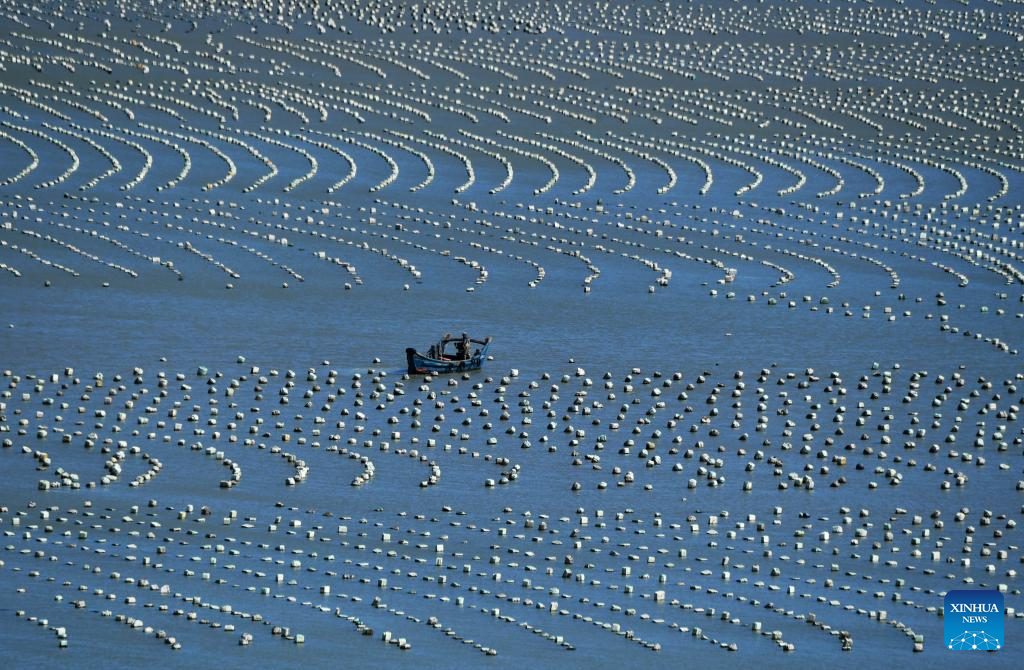
This photo taken on Nov. 10, 2020 shows a mariculture zone near Qida Village of Lianjiang County, southeast China's Fujian Province. Situated by the East China Sea, Fujian Province boasts a sea area of 136,000 square km, a rugged coastline and numerous bays and islands, making it an optimal place for developing mariculture.
Over the years, Fujian has concentrated on increasing high-quality marine fishery food supplies, and accelerating the upgrading of mariculture while protecting the marine ecological environment. In 2023, Fujian's mariculture output was nearly 5.8 million tonnes, ranking second in the country. (Xinhua/Wei Peiquan)
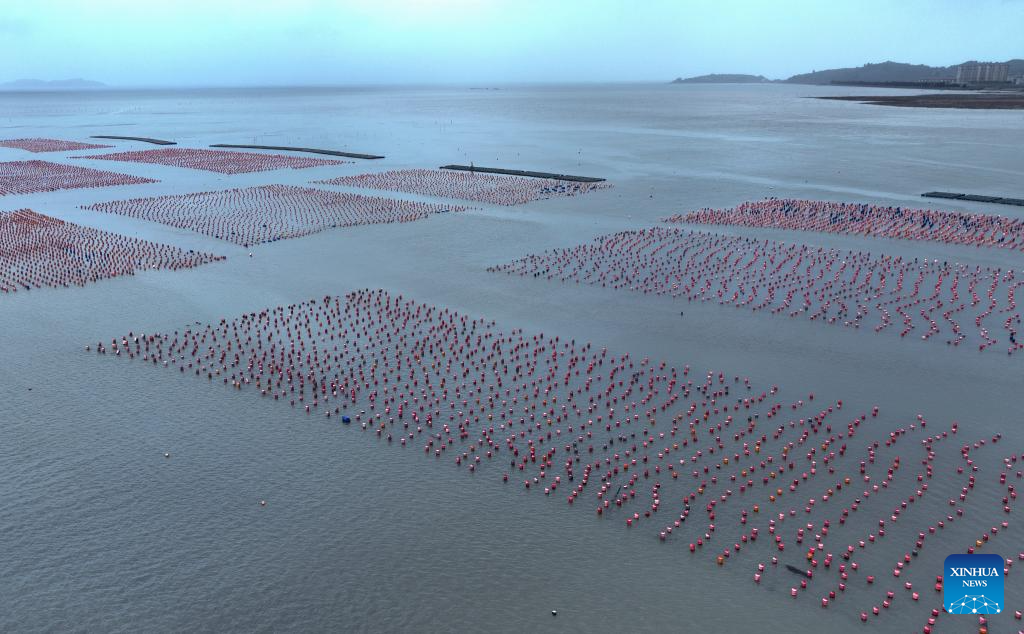
An aerial drone photo taken on May 21, 2024 shows a mariculture zone in Lianjiang County of Fuzhou, southeast China's Fujian Province. Situated by the East China Sea, Fujian Province boasts a sea area of 136,000 square km, a rugged coastline and numerous bays and islands, making it an optimal place for developing mariculture.
Over the years, Fujian has concentrated on increasing high-quality marine fishery food supplies, and accelerating the upgrading of mariculture while protecting the marine ecological environment. In 2023, Fujian's mariculture output was nearly 5.8 million tonnes, ranking second in the country. (Xinhua/Wei Peiquan)
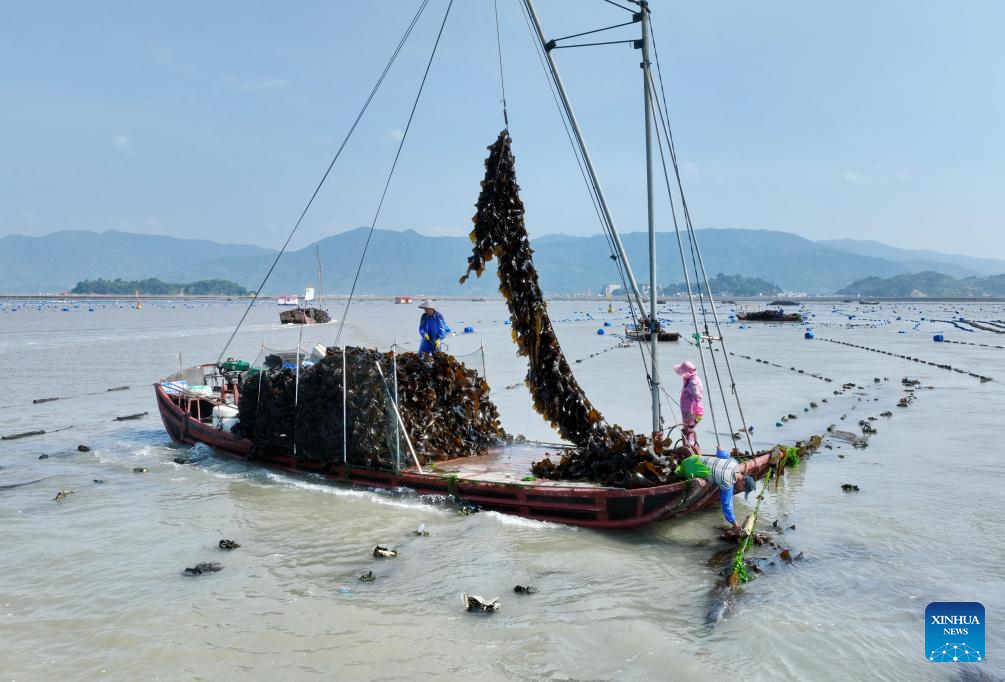
A drone photo taken on May 9, 2024 shows farmers harvesting kelp at the marine areas near Shajiang Village of Xiapu County, southeast China's Fujian Province. Situated by the East China Sea, Fujian Province boasts a sea area of 136,000 square km, a rugged coastline and numerous bays and islands, making it an optimal place for developing mariculture.
Over the years, Fujian has concentrated on increasing high-quality marine fishery food supplies, and accelerating the upgrading of mariculture while protecting the marine ecological environment. In 2023, Fujian's mariculture output was nearly 5.8 million tonnes, ranking second in the country. (Xinhua/Lin Shanchuan)
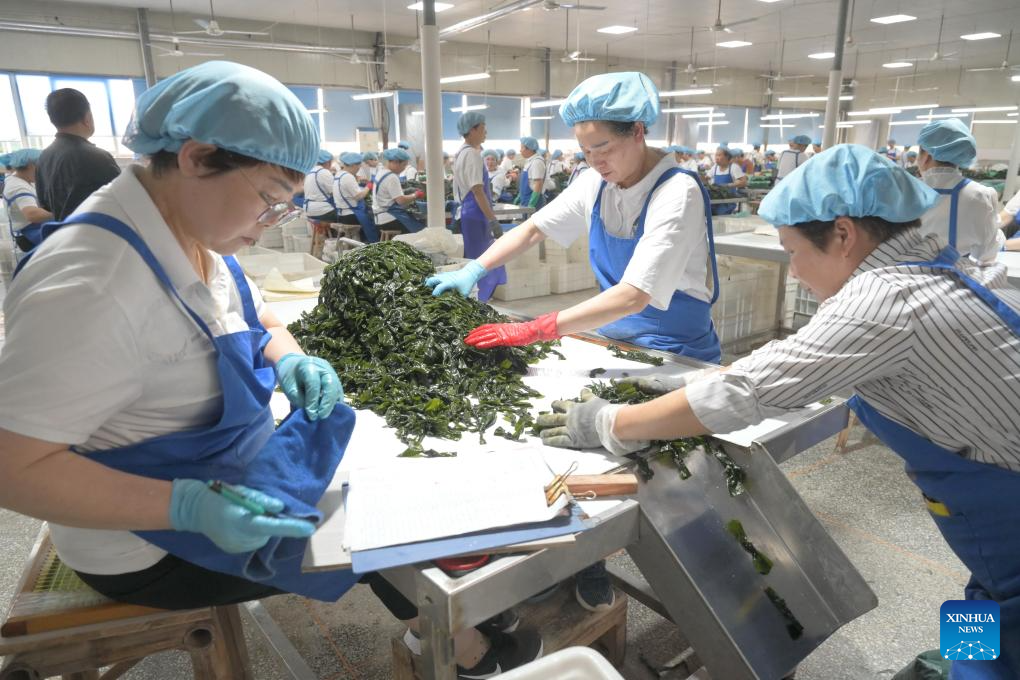
Workers process kelp products at a factory in Xiapu County, southeast China's Fujian Province, May 8, 2024. Situated by the East China Sea, Fujian Province boasts a sea area of 136,000 square km, a rugged coastline and numerous bays and islands, making it an optimal place for developing mariculture.
Over the years, Fujian has concentrated on increasing high-quality marine fishery food supplies, and accelerating the upgrading of mariculture while protecting the marine ecological environment. In 2023, Fujian's mariculture output was nearly 5.8 million tonnes, ranking second in the country. (Xinhua/Lin Shanchuan)
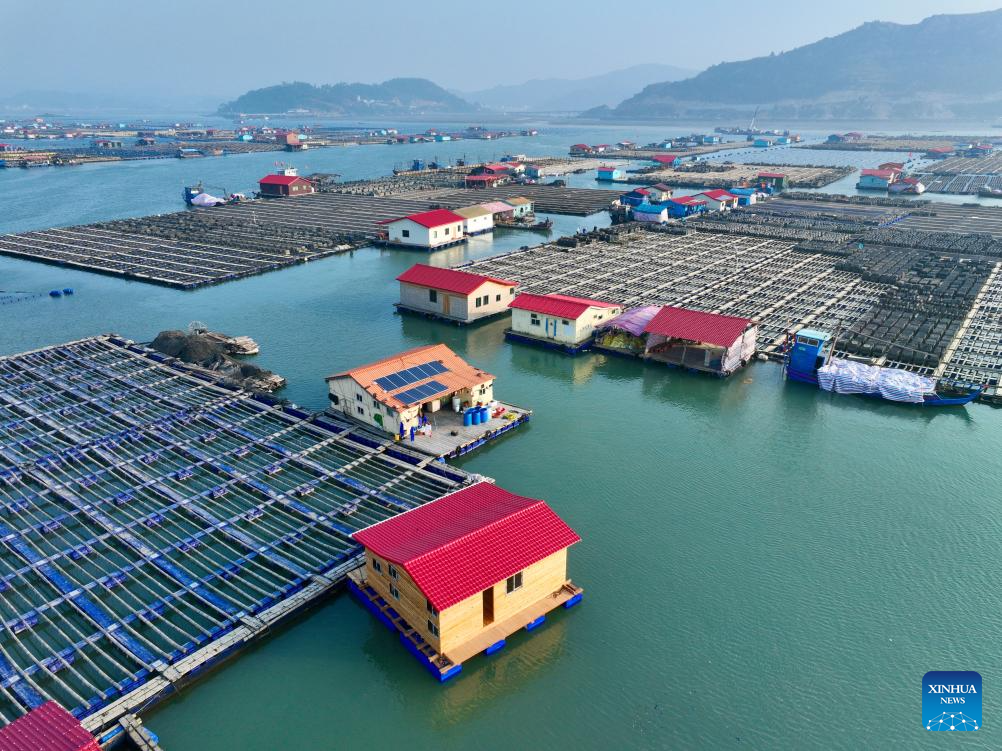
An aerial drone photo taken on Jan. 11, 2024 shows a mariculture zone in Xiapu County, southeast China's Fujian Province. Situated by the East China Sea, Fujian Province boasts a sea area of 136,000 square km, a rugged coastline and numerous bays and islands, making it an optimal place for developing mariculture.
Over the years, Fujian has concentrated on increasing high-quality marine fishery food supplies, and accelerating the upgrading of mariculture while protecting the marine ecological environment. In 2023, Fujian's mariculture output was nearly 5.8 million tonnes, ranking second in the country. (Xinhua/Jiang Kehong)

A livestreamer promotes kelp products via livestreaming in Xiapu County, southeast China's Fujian Province, May 8, 2024. Situated by the East China Sea, Fujian Province boasts a sea area of 136,000 square km, a rugged coastline and numerous bays and islands, making it an optimal place for developing mariculture.
Over the years, Fujian has concentrated on increasing high-quality marine fishery food supplies, and accelerating the upgrading of mariculture while protecting the marine ecological environment. In 2023, Fujian's mariculture output was nearly 5.8 million tonnes, ranking second in the country. (Xinhua/Lin Shanchuan)
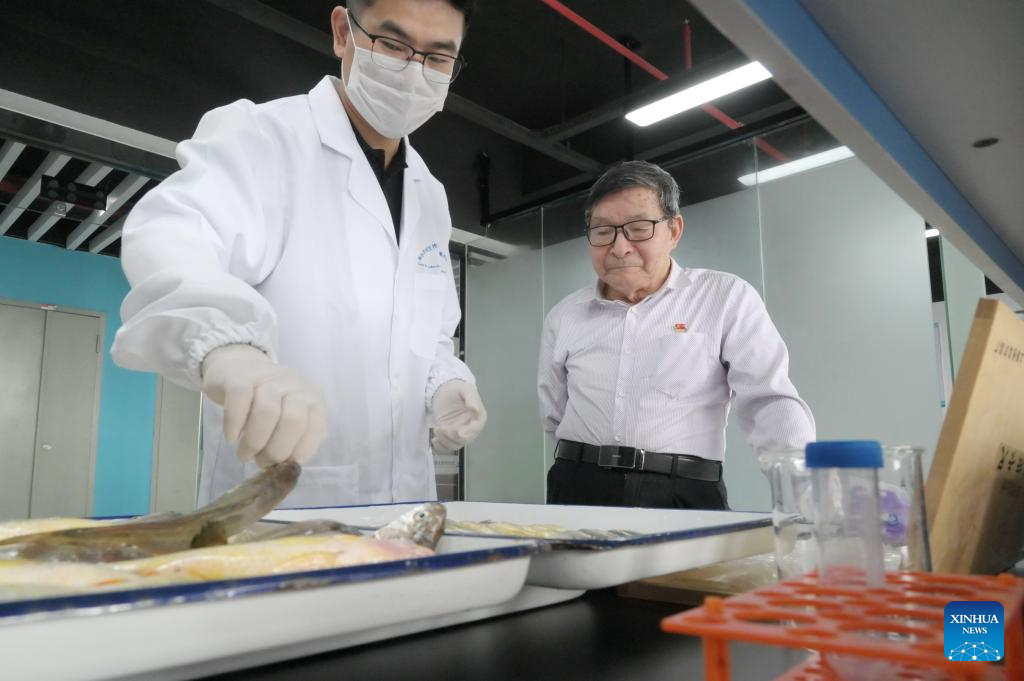
Liu Jiafu (R), a specialist in large yellow croaker hatchery techniques, works at a laboratory in Ningde City, southeast China's Fujian Province, May 8, 2024. Situated by the East China Sea, Fujian Province boasts a sea area of 136,000 square km, a rugged coastline and numerous bays and islands, making it an optimal place for developing mariculture.
Over the years, Fujian has concentrated on increasing high-quality marine fishery food supplies, and accelerating the upgrading of mariculture while protecting the marine ecological environment. In 2023, Fujian's mariculture output was nearly 5.8 million tonnes, ranking second in the country. (Xinhua/Lin Shanchuan)
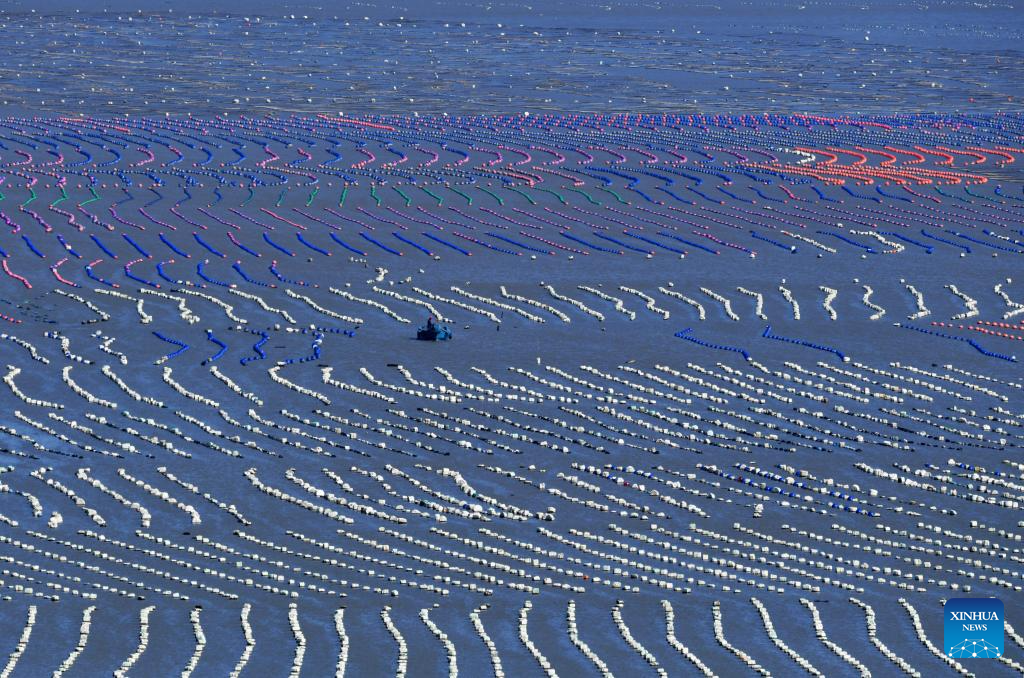
This photo taken on Dec. 1, 2021 shows a mariculture zone in Guanwu Village of Lianjiang County, southeast China's Fujian Province. Situated by the East China Sea, Fujian Province boasts a sea area of 136,000 square km, a rugged coastline and numerous bays and islands, making it an optimal place for developing mariculture.
Over the years, Fujian has concentrated on increasing high-quality marine fishery food supplies, and accelerating the upgrading of mariculture while protecting the marine ecological environment. In 2023, Fujian's mariculture output was nearly 5.8 million tonnes, ranking second in the country. (Xinhua/Wei Peiquan)
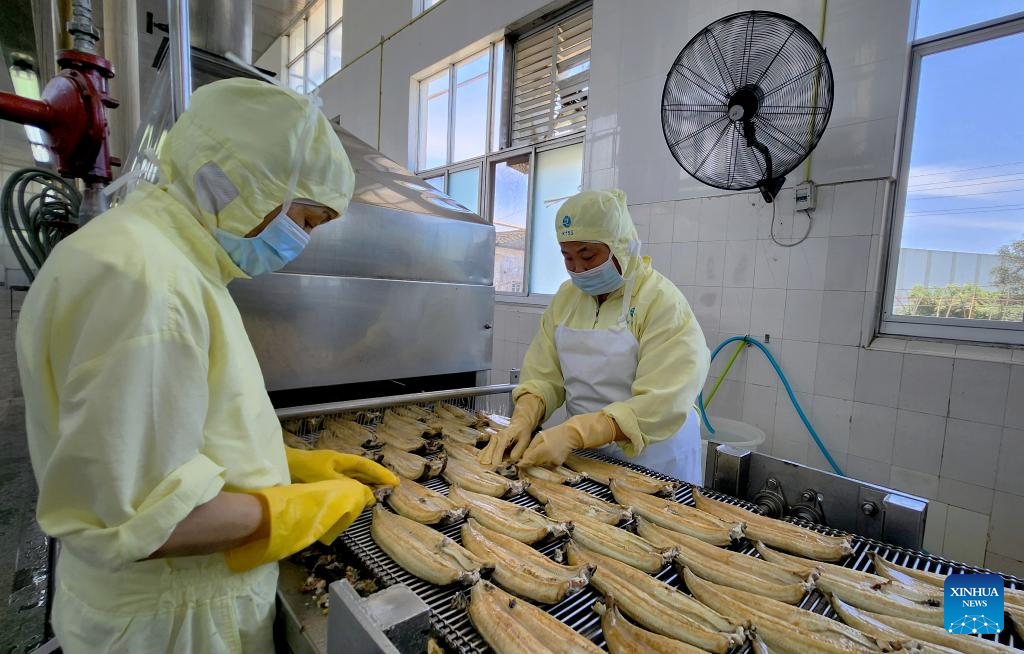
Workers process grilled eels at a factory in Fuzhou, southeast China's Fujian Province, May 15, 2024. Situated by the East China Sea, Fujian Province boasts a sea area of 136,000 square km, a rugged coastline and numerous bays and islands, making it an optimal place for developing mariculture.
Over the years, Fujian has concentrated on increasing high-quality marine fishery food supplies, and accelerating the upgrading of mariculture while protecting the marine ecological environment. In 2023, Fujian's mariculture output was nearly 5.8 million tonnes, ranking second in the country. (Xinhua/Wei Peiquan)
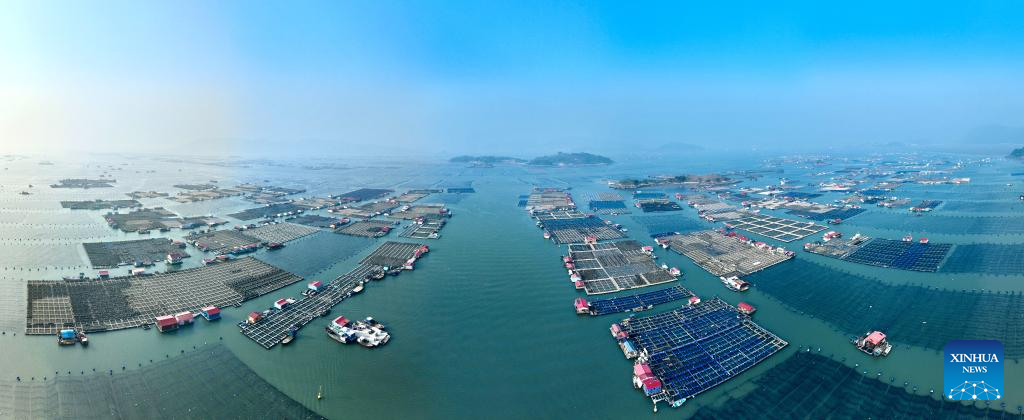
An aerial panoramic drone photo taken on Jan. 11, 2024 shows a mariculture zone in Xiapu County, southeast China's Fujian Province. Situated by the East China Sea, Fujian Province boasts a sea area of 136,000 square km, a rugged coastline and numerous bays and islands, making it an optimal place for developing mariculture.
Over the years, Fujian has concentrated on increasing high-quality marine fishery food supplies, and accelerating the upgrading of mariculture while protecting the marine ecological environment. In 2023, Fujian's mariculture output was nearly 5.8 million tonnes, ranking second in the country. (Xinhua/Jiang Kehong)
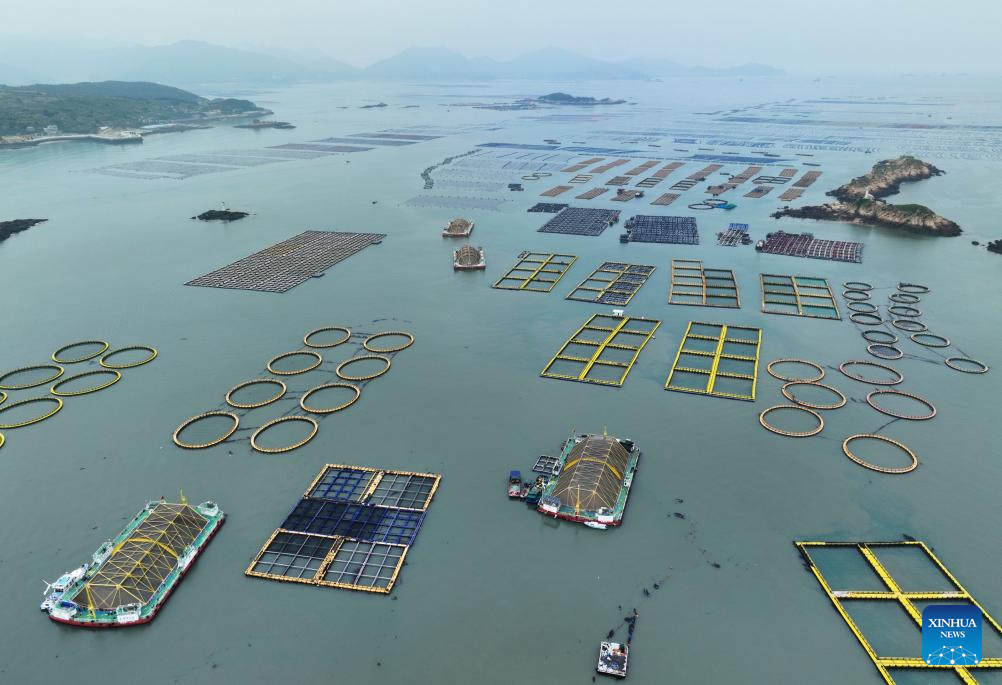
An aerial drone photo taken on May 7, 2024 shows a mariculture zone in Lianjiang County of Fuzhou, southeast China's Fujian Province. Situated by the East China Sea, Fujian Province boasts a sea area of 136,000 square km, a rugged coastline and numerous bays and islands, making it an optimal place for developing mariculture.
Over the years, Fujian has concentrated on increasing high-quality marine fishery food supplies, and accelerating the upgrading of mariculture while protecting the marine ecological environment. In 2023, Fujian's mariculture output was nearly 5.8 million tonnes, ranking second in the country. (Xinhua/Lin Shanchuan)
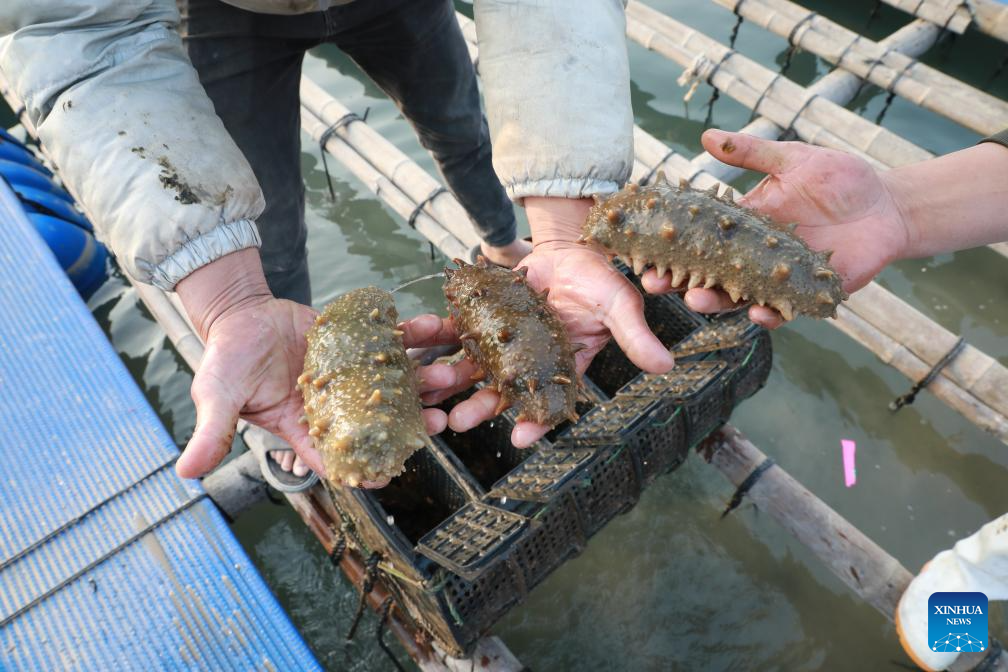
Fishermen check the sea cucumbers at a mariculture zone in Xiapu County, southeast China's Fujian Province, Jan. 11, 2024. Situated by the East China Sea, Fujian Province boasts a sea area of 136,000 square km, a rugged coastline and numerous bays and islands, making it an optimal place for developing mariculture.
Over the years, Fujian has concentrated on increasing high-quality marine fishery food supplies, and accelerating the upgrading of mariculture while protecting the marine ecological environment. In 2023, Fujian's mariculture output was nearly 5.8 million tonnes, ranking second in the country. (Xinhua/Jiang Kehong)
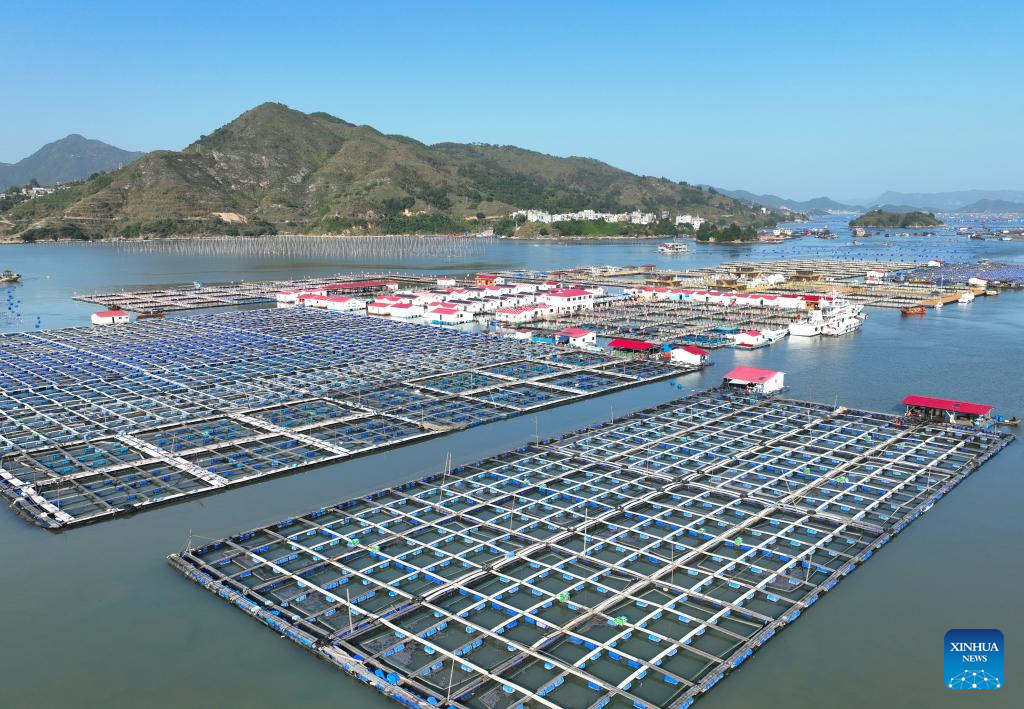
An aerial drone photo taken on Nov. 18, 2023 shows a mariculture zone in Xiapu County, southeast China's Fujian Province. Situated by the East China Sea, Fujian Province boasts a sea area of 136,000 square km, a rugged coastline and numerous bays and islands, making it an optimal place for developing mariculture.
Over the years, Fujian has concentrated on increasing high-quality marine fishery food supplies, and accelerating the upgrading of mariculture while protecting the marine ecological environment. In 2023, Fujian's mariculture output was nearly 5.8 million tonnes, ranking second in the country. (Xinhua/Lin Shanchuan)
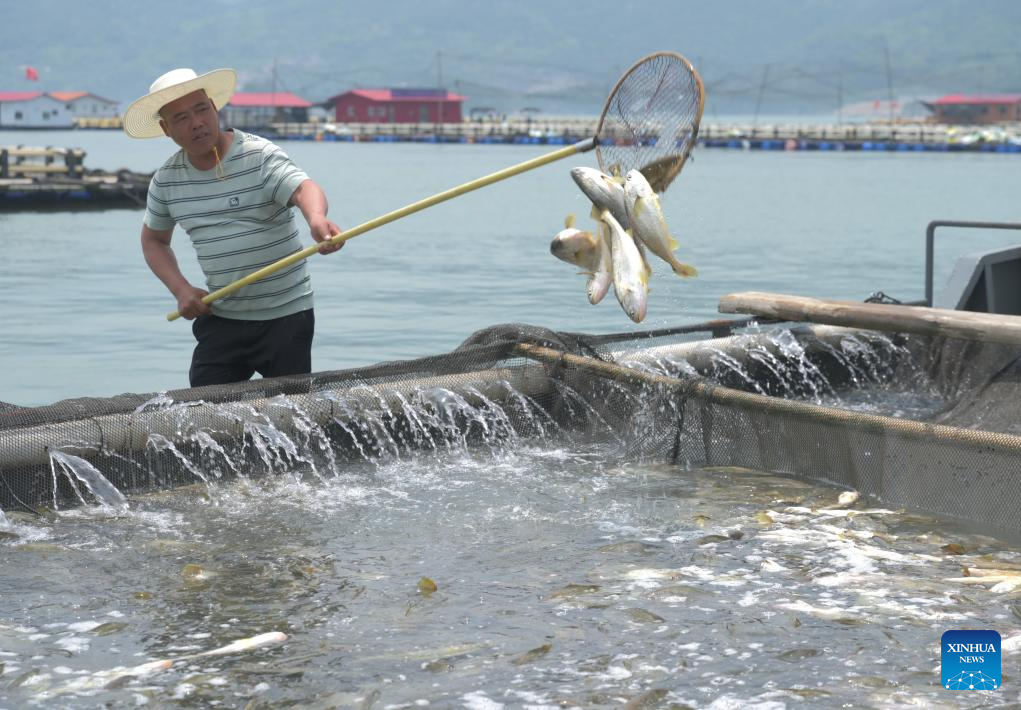
A fisherman selects large yellow croakers at a mariculture zone in Ningde City, southeast China's Fujian Province, May 8, 2024. Situated by the East China Sea, Fujian Province boasts a sea area of 136,000 square km, a rugged coastline and numerous bays and islands, making it an optimal place for developing mariculture.
Over the years, Fujian has concentrated on increasing high-quality marine fishery food supplies, and accelerating the upgrading of mariculture while protecting the marine ecological environment. In 2023, Fujian's mariculture output was nearly 5.8 million tonnes, ranking second in the country. (Xinhua/Lin Shanchuan)
点击右上角![]() 微信好友
微信好友
 朋友圈
朋友圈

请使用浏览器分享功能进行分享
